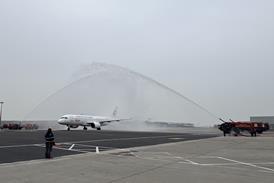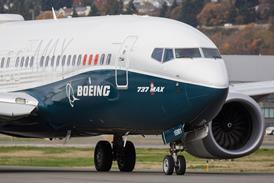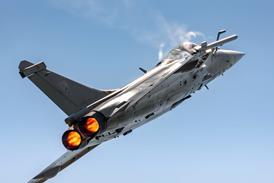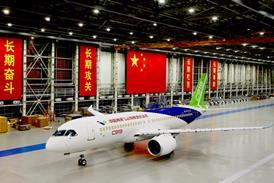Failure to expand runway capacity at major airports will negate almost all the capacity, efficiency and environmental gains being planned for Europe's future air traffic management system. That is one conclusion reached by the multi-disciplinary SESAR team in the third of the six studies that will make up the definition phase in the Single European Sky (SES) project.
This planning document has been accepted by Eurocontrol and the European Commission, and it is the first of the SESAR definition phase reports that provides a vision of the operating objectives for the SES - its actual way of doing business. The two earlier reports established the starting point - the nature of Europe's ATM infrastructure as it now is - and also defined the performance parameters within which the new system would work. The latest SESAR report is entitled "the ATM target concept", and it reveals radical differences to the way in which individual air traffic movements will be managed by 2020.
Framework
Jacques Barrot, head of transport at the EC, led the recent High Level Group study on the future European aviation regulatory framework. The group's report was called "A framework for driving performance improvement".
In his foreword to that report Barrot put the importance of the environment high on the aviation agenda, commenting that although Europe's national ATM systems were better harmonised than they had ever been, they still have a long way to go: "The system remains fragmented. The regional initiatives of service integration are diverse in scope and in ambitionLack of capacity is looming in view of regional discrepancies in traffic growth and preparation for that growth. Little progress has been achieved in improving cost efficiency."
Barrot says: "A highly competitive aviation industry requires the best possible infrastructure with the highest level of safety and at the best possible cost efficiency. Meanwhile, climate change has put environmental issues to the top of the political agenda. While aviation is only a modest contributor to greenhouse gases, with around 2% of global emissions, flying is one of the fastest-growing emitters. And the impact of aviation is aggravated by emission of nitrogen oxides, soot and water vapour at high altitude. ATM delays and inefficiencies mean unnecessary emissions."
User-centric
The SESAR-defined "target concept" changes how ATM should be delivered. It would not be devised in the traditional way, in which air navigation service providers (ANSP) imposed solutions on airspace users. Since its inception the SESAR programme's objective has been to shift the way the ATM system works from being provider-centric to user-centric, and this "target concept" plan describes the means by which this can be achieved.
There will be a gradual transition process, says the report, but the target will be met across the entire system by 2020. Airlines will be able to plan to operate all their flights according to what has been dubbed "the business trajectory" - the best available trajectory for each flight from the business point of view. That would assume the shortest time and distance from the departure gate to the destination gate, with the lowest possible fuel consumption.
The "business trajectory" may even allow the crew the option of a fuel-efficient cruise-climb rather than adherence to stepped flight levels. If the ideal trajectory cannot be flown, the system would deliver the most efficient available alternative. The report promises that, by 2020, less than 5% of flights would use fuel consumption greater than that for an ideal trajectory with no delay, and for that 5% of flights, the average extra-fuel consumption will be less than 5%. Similarly, less than 2% of scheduled flights requesting departure time change will suffer a delay penalty greater than 3min.
System-wide
The principle upon which success will depend, says the SESAR report, is the establishment of a network-centric communications system, known as a "system-wide information system" that will enable collaborative decision-making in which all the parties continuously participate. That includes the crew of the flight itself, the airline, the departure and destination airports and the ANSPs.
The collaborative decision-making system will have to be flexible enough to adapt to unexpected occurrences of all types, like weather, runway blockage, and aircraft or ANSP technical problems. There will also be an over-arching network operations plan to ensure demand does not exceed capacity, says the report.
This new system would have the potential to increase en-route traffic capacity by a factor of three, but that would heighten the problem of inadequate airport infrastructure, particularly at the major hubs. This, says the SESAR report, could render the ATM improvement pointless because it would cause gridlock on the ground and fill the holding patterns in terminal airspace, leading to delay, wasted fuel, increased noise and worse pollution. A Eurocontrol analysis of airport-caused delays from 2002-2006 shows that aerodrome capacity already causes most delays, with weather the second most significant factor and airport air traffic control a much smaller contributor.
Barrot's High Level Group warns: "The time has come to acknowledge the issue of airport capacity at the European level as European airports face increasing difficulties in securing their licence to grow at the national level." The report says a campaign to raise Europe-wide awareness of the "coming airport capacity crunch" must be in operation by next year.
Eurocontrol echoes this concern: "Capacity and cost-effectiveness targets in some areas [major hub airports and high density airspace] can only be achieved through supplemental actions [like] additional runways and functional airspace blocks."
Finally, to be able to deliver the "target concept" of business trajectories for every flight, the surveillance technology and controller tools (see "Enabling technology") have to be sufficiently smart to ensure trajectory separation. Similarly, aircraft navigation systems and on-board equipment have to be capable of guiding aircraft along 4D trajectories with unprecedented precision, and the ground and air safety-net systems must be perfectly co-ordinated to prevent collision if the system fails.
The report makes it clear that the EC intends to regulate to give the SESAR strategy the best chance of producing a high-efficiency, low-cost system. It says: "Every regulatory intervention should target improving performance within overriding safety objectives. As general principles, set performance improvement objectives, maximise the use of performance incentives and require independent performance reporting. For ATM, adapt the regulatory framework and governance structures to stimulate management to deliver improved performance. Where possible, facilitate the application of market principles by the unbundling and liberalisation of ANSP services. Introduce economic regulation to drive performance improvement in the monopoly elements of ANSP activities."
Source: Flight International























